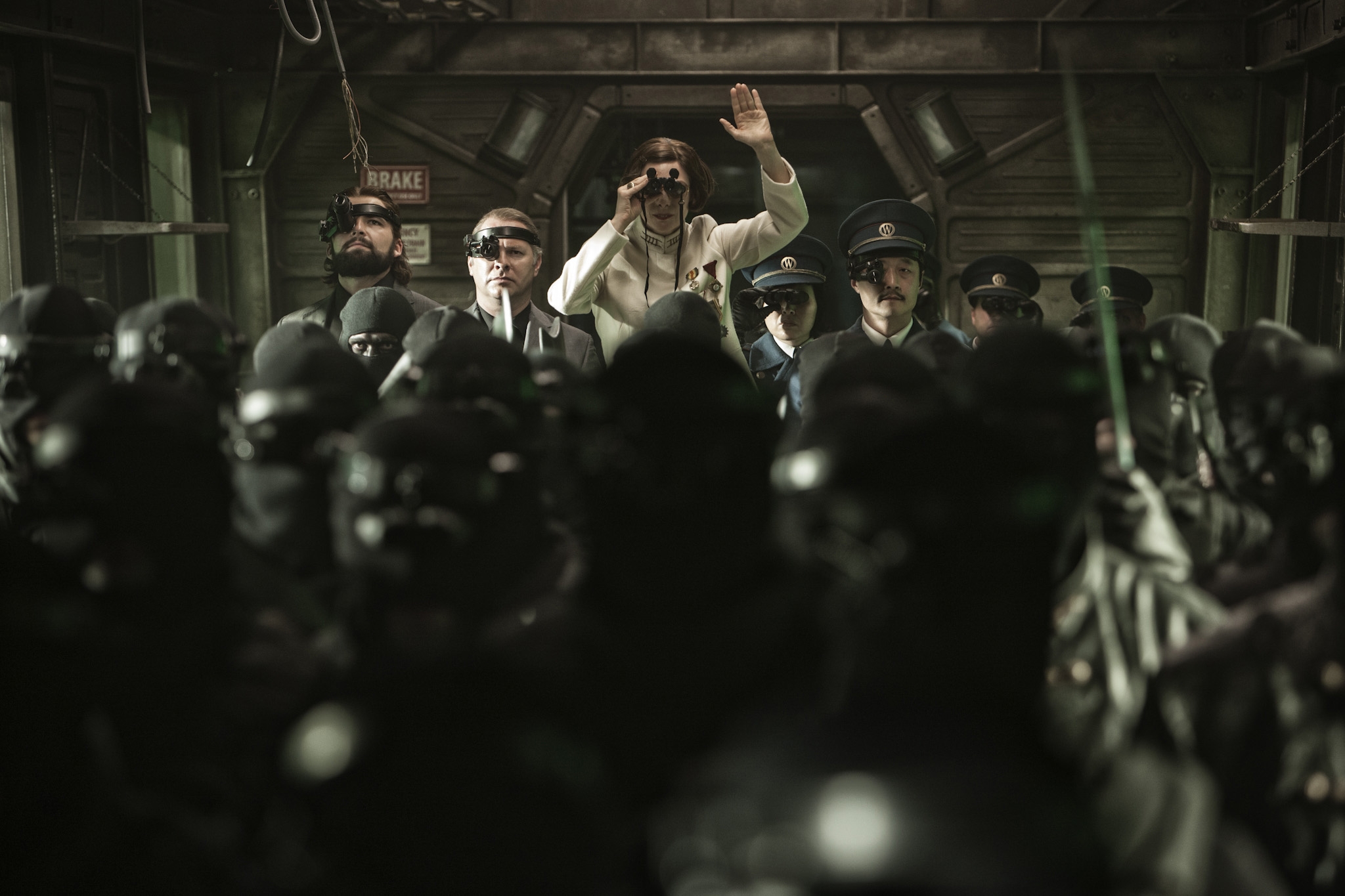On Joon-ho Bong’s 2013 science-fiction action film
When a filmmaker describes his film as a political allegory, it is difficult to discuss the film’s metaphorical content without feeling a bit like you are imprisoned in that filmmaker’s interpretive work. This is undoubtedly the case with Joon-ho Bong’s science-fiction action film Snowpiercer (2013, based on a French graphic novel), which presents the world contained within a sealed train, powered by a perpetualmotion engine, circling a frozen, postapocalyptic earth. The film marks the cult Korean director’s move towards a more mainstream Western audience, and among its stars are Chris Evans, Song Kang-ho, Go Ah-sung, Jamie Bell, Ewen Bremner, John Hurt, Tilda Swinton, Octavia Spencer and Ed Harris.
To me it seems as if an audience has to choose one of two ways of watching this film: either with the naivety of an old-fashioned, enthusiastic filmgoer, absorbed by the dynamics of the train’s closed social system, which incorporates a ruthless segregation of classes (the elite at the front of the train, the poor at the rear); or with a pretence of enlightened empathy, ‘sharing’ the emotions, for example, of those passengers from carriages in the train’s windowless rear who have not forgotten about the pleasures of the ‘outside’ world and rush, when given the opportunity during an uprising, to inhabit those forward carriages with windows. Could I really appreciate how anxious they are to catch a glimpse of the sun? And could I connect with the perspective of children, born onboard into a dark, closed world, who have developed extrasensory capabilities? You might say that everyone understands on entering a cinema these days that he or she is expected to suspend his or her disbelief, but to do so in the context of a film such as this, so laden with social and political allegory, is also to suspend disbelief when it comes to the filmmaker’s ideas about society and politics – to fall into his trap.
The train is inhabited by all the planet’s surviving humans, and the internal hierarchy onboard is a microcosm of our current global system. Thus emerges a massive paradox: if this train is a complete reflection of the world that once existed outside it, then what is the point of taking leave of the train, as those in the rear wish to do, and going back to the outside world? And if we were unable to destroy or reform the world order that released all that manmade refrigerant into the atmosphere (which, in terms of the film’s plot, saved the earth from global warming but at the same time caused the apocalypse), then what real difference would the revolt make? Bong’s film regrettably stops short of addressing these questions. The now-frozen earth has become a fairytale on the train; when two children step outside for the first time, they are greeted by a polar bear that seems to signify nature’s resilience in the face of disaster. The political allegory of Snowpiercer turns out to be a fairytale as well. As with his earlier films Mother (2009) and The Host (2006), Bong cannot help employing a sentimental depiction of family life – as if kinship or the imitation of kinship, which is required by this film’s overtures to a global audience, is sufficient to overcome the desolation that lies behind the political metaphor.
Any parable or fairytale requires an oppositional element that obstructs the story’s unifying power. This element might become a true Noah’s Ark of individual attitude, or a seed of diversity within a global system. Though this element will be ultimately absorbed by the universal predicament (in the case of Snowpiercer, the world order that caused the apocalypse), it still preserves a message of individual choice. In Snowpiercer, Bong concocts an odd fatalism to satisfy the requirements of dramatic structure: the male leader loses one of his well-maintained arms during the final rescue scene in accordance with the principle that revolt always requires sacrifice. Bong’s visceral manifestation of this fatalism is rooted in the mortal body and serves to reinforce Snowpiercer’s brutal and violent nature. Something that also could have been explored further is the condition of the lowest-caste dwellers in the ‘tail’ of the train: they leave behind the moral depravity of their initial ‘law of the jungle’ cannibalism, which involved eating each other’s limbs; however, they retain a ruthless system of punishment in which the arms of rebellious types are frozen and then smashed off with hammers. Thus Boon alludes to symmetry between the barbarity in the tail and the protagonist’s selfless sacrifice. The filmmaker uses violence, predicated on the primitiveness of a direct treatment of the body, to evoke a physical experience that remains a vicarious creative imagination of individual possibility.
Of course, the less intense details of Snowpiercer provide opportunities to consider the relationship between global unity and individual revolt. The presence of Marlboro cigarettes and a black person making sushi cannot be ignored. Word has it that the stereotype-defying sushi chef in the film originated from Bong’s personal travel experiences. In the train, there are interpreters associated with authority, but people can also communicate with handheld translation devices. Scientific progress is both the source of disaster and also a handy tool of expression for rebels against authority. This dichotomy mirrors the parable of fragmented individuals revolting against the intact world of the train. Here is a parable about the danger of parables: a staunchly fragile film.
Translated from the Chinese by Daniel Nie. This article originally appeared in the Spring/Summer 2014 issue of ArtReview Asia
